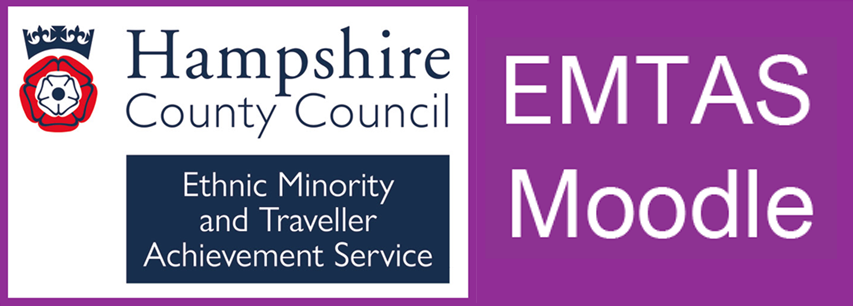Blog entry by Astrid Dinneen
Anyone in the world
In this blog, the Hampshire EMTAS Teacher Team considers what best practice might look like in relation to catering for the needs of refugee children on roll in Hampshire Schools.

In recent months, Hampshire has hosted a number of refugee families from Afghanistan, some of whom will remain in the county permanently whilst others will eventually be found a permanent home elsewhere. The children of these refugee families are starting to be taken onto roll at schools across the county, and this has raised a number of questions as colleagues have sought advice on how best to streamline support at this vital point in the children’s lives.
First and foremost, at the point of referral to EMTAS it has become apparent that not everyone is confident when it comes to telling the difference between an asylum seeker and a refugee. To cut to the chase, the term refugee is widely used to describe displaced people all over the world but legally in the UK a person is a refugee only when the Home Office has accepted their asylum claim. While a person is waiting for a decision on their claim, he or she is called an asylum seeker. Some asylum seekers will later become refugees if their claims for asylum are successful.
The recently-arrived Afghan refugee children are here with their families and because of this they benefit from greater continuity in terms of support from their primary care-givers. Unaccompanied Asylum-Seeking Children (UASC), on the other hand, are minors who are here on their own and therefore don’t have the support of their close families. UASC are accommodated in the care system in the UK but their status in the longer term remains in question. They will be claiming asylum, which – if they are successful – will give them indefinite leave to remain and refugee status. This will give them the right to live permanently in the UK and to pursue higher education and/or work in the UK. Check the EMTAS guidance for more detail on this point.
Moving on to talk about refugees, in many ways the needs of
refugee children are very similar to those of any other international new
arrival, hence staff in schools should, in the main, adopt the same EAL good
practice with these children as they would any others. There are, however, some additional things to
bear in mind.
Refugee children (as well as UASC) may have had to leave their country of origin suddenly, bringing with them very few of their personal belongings and leaving much behind. Because of this, some may experience a greater sense of loss than children whose move to the UK was undertaken in a more planned way. Some refugee children will have left behind members of their extended families as well as friends, favourite toys and pets (where keeping pets is part of their culture), and may be concerned for their safety or not know their whereabouts or even if they are alive. This can be compounded by having little opportunity to communicate with them to check if they’re OK. Older children are likely to be more aware of and affected by this than younger ones, and their awareness may be heightened by conversations within their household as parents talk about and begin to process the events that brought them here.
Some refugee children will have experienced unplanned interruptions to their education, especially those who have spent time in refugee camps en route to the UK or those who have travelled with their families through various countries. Lack of facilities might mean that some have missed opportunities to keep up with their learning, hence there may be gaps. The longer the gap, the more they will have missed – hardly rocket science, but something to bear in mind when thinking about reasons why a child’s reading and writing skills may not be as secure as would normally be expected. The advice with this would be to clarify each child’s education history with parents and then to consider what arrangements might be put in place to help plug any gaps – without causing them to miss even more eg through ill-timed/too many withdrawal interventions (see EMTAS Position Statement on Withdrawal Provision for learners of EAL).
For most refugee children, routine really helps. They benefit from knowing what each school day will hold, so things like visual timetables are helpful. They also benefit from being supported to quickly develop a sense of belonging in their new school. Use buddies – including trained Young Interpreters – to support them as they adjust to their new surroundings. Bear in mind that the less-structured times such as break and lunch times can be more difficult for a newly-arrived refugee child, so check that they are being included and are joining in with play with other children. Teachers may find it helpful to teach some playground games in the relative safety and calm of the classroom, with input and support from other children in their class, with the idea that these games can then transfer to the outside areas.
Support from their peers will be key to the induction and integration of a newly-arrived refugee child. Sit them with peers who can be good learning, behaviour and language role models. Try to match them with peers who are of similar cognitive ability. Remember to reward all children involved with praise where things have gone well eg if they have shown the new arrival their book or repeated an instruction or the new arrival has accepted support from a peer or tried to involve themselves in a task or whatever. With younger learners, consider using a Persona Doll to explore ways of supporting the new arrival with your class.
When it comes to accessing the curriculum, remember the benefits of using first language both to aid access and engagement and to give the child a sense of the value of the L1 skills they bring with them. Use of L1 can be a great way of involving parents too, so make sure you think of ways they can support – perhaps helping their child look up key words or using Wikipedia in other languages to research a topic. If you have a literate child in your class, encourage them to write in L1 and explore how translation tools can be used to build a dialogue with the child and give them the skills to communicate their ideas with others in accessible ways. Many translation tools have an audio component too, so even children who can’t read very well in L1 can benefit from their use in the classroom. For more information about translation tools, see ‘Use of ICT’ on the EMTAS Moodle.
The biggest issues often relate not to language barriers but to culture; there are lots of things we take for granted to be commonly understood, shared experiences which for refugee children will be new, alien. These can include experiences of teaching and learning, for instance a didactic approach wherein the teacher conveys knowledge to the empty vessels that are their charges may have been the norm in country of origin. People whose schooling embodied this sort of approach may find learning through play or learning through engaging in dialogue with others very ‘foreign’; uncomfortably new territory they need to negotiate without any prior experience on which to base their understanding or response.
Refugee children from Afghanistan will almost invariably be Muslim and this in itself raises some issues that schools will need to address. For some children, there will be issues with school uniform, with others, schools may need to rethink key texts they are using in class eg ‘The Three Little Pigs’ with younger learners or ‘Lord of the Flies’ with children in secondary phase may be problematic. For guidance on these and other issues to do with having Muslim children on roll in your school, see the comprehensive guidance from the Muslim Council of Britain (MCB), posted in an open access course on the EMTAS Moodle here.
So to some final advice on how to negotiate this unfamiliar terrain. For one, try to remember always that refugee children’s responses may at first seem strange or oppositional or even rude. This sort of thing is likely to be indicative of a cultural barrier that needs to be overcome with both parties open to moving their respective positions. To get the best results, try to be the party that is receptive to difference and willing to make the most moves to understand and accommodate. If issues arise and you’re not sure what to do, EMTAS is here to support so do get in touch with us.
By phone 03707 794222
By email emtas@hants.gov.uk
Find out more:
[ Modified: Tuesday, 11 January 2022, 2:53 PM ]
